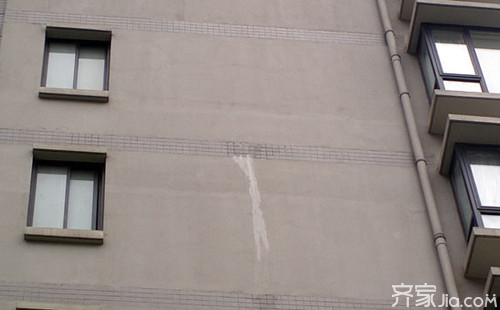In house decoration, there are many reasons that cause exterior wall seepage. Design mistakes, improper selection of materials, unconformity of construction techniques, inaccurate handling of details, improper secondary decoration, etc., may lead to water seepage in exterior walls. If the seepage of the external wall is serious, it will cause the wall decoration to bulge and fall off, affecting the appearance of the building and sometimes causing damage to the goods and causing loss of people’s property. Then, Xiaobian will introduce you to the external wall seepage treatment method so that your exterior wall will no longer seep.

In all home improvement problems, indoor leaking faults are more common, and there are not many cases of leaking outside walls. However, the construction involving outdoor wall surfaces makes the problem a bit complicated because the indoor construction can also be done by itself. Outdoor repair must use professional tools and professional technicians.

| First, the reasons for the external wall seepage |
The first thing to do when seeing the water seepage in the external wall is to find the cause of the water leakage. This can start with the analysis of the materials used in the building's construction. Therefore, many modern homes use ordinary concrete perforated brick materials, which have been investigated in recent years. It was found that almost all external walls of ordinary concrete porous brick materials have cracks and water seepage.

| Second, external wall seepage treatment methods |
When controlling the seepage of such walls, the guiding ideology of the cement mortar layer on the surface of the wall is to repair cracks, empty drum layers and seepage pores on the surface of the mortar layer, and restore the waterproof protection function of the cement mortar layer.
1. The empty drum part of the cement mortar layer should be removed and repaired with a polymer cement mortar. The polymer cement mortar should be layered and pressed, and the thickness should be the standard for repairing the wall surface.
2. When there is a wide gap on the surface of the wall, sprinkle the water to wet the gap first, and use the inorganic waterproof plugging material (water does not leak, quick-drying cement, etc.) to fill in the gap. When the gap on the surface of the wall is narrow, waterproof coating such as polyurethane waterproof coating is used to brush the gap. When the brush is applied, the thickness of the coating film is controlled to 1.0 to 1.5 mm. The width of the gap should be filled with inorganic waterproof plugging material. The standard, when filled in, is included in the wider cracks.

Editor's summary: After reading this article, everyone has a certain understanding of the external wall seepage. The next step is to analyze the various causes of water seepage in the external walls, and find the reasons for targeted remedial measures. With regard to the external wall seepage treatment method, it is introduced to you so that your exterior wall is no longer seepage. I hope to help everyone. If you want to know more related information, you can pay attention to this website information.
Exterior wall tiles
Carbon and its compounds A wide variety of carbons can also be alloyed with iron, the most common being carbon steel; graphite and clay can be used to make pencil cores for writing and painting, and graphite can also be used as a lubricant and pigment as a glass. Molding materials for electrodes and electroplating, electroforming, electric motor brushes, and neutron deceleration materials in nuclear reactors; coke can be used in barbecue, drawing materials and ironmaking industries; gem-quality diamonds can be used as jewelry, industrial Diamond is used for drilling, cutting and polishing, as well as tools for machining stones and metals.
Carbon Products,Carbon Block,Metallurgical Coke,Graphite Electrode
Ningxia Evergreen Trading Co., Ltd. , https://www.nxevergreen.com